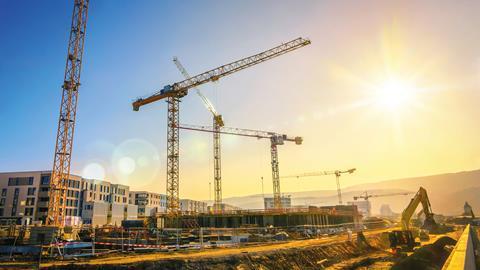The pandemic and Brexit have forced us to make fundamental changes to the way we work ÔÇô and we have learnt a lot along the way. Now we need to take those learnings forward, says Ann Bentleyse learnings forward, says Ann Bentley
We are almost one year on from the end of our first lockdown in this country and nearly 16 months on from the UK leaving the EU. Both have been seismic events in the history of our time, but also in the history of our industry. As we come out of our third lockdown and parts of the world start returning to something closer to normal ÔÇô with shops, restaurants and indoor activities all beginning to recover ÔÇô so come the stories and reportage of the effects of the past 18 months on our industry.

Only a few weeks ago ║├╔ź¤╚╔˙TV ran a news story outlining the Construction Leadership CouncilÔÇÖs (CLC) call to arms for the industry to ÔÇťfairly share supplies to avoid smaller firms being hit the mostÔÇŁ as it reported on materials and resource shortages that have intensified in recent months. It is a trend that the CLC predicts will only get worse over the next six months as demand continues to rise while supply keeps falling.
Like many who have worked in the construction sector for some time, the highs and lows of market forces, the rise and fall of demand and supply of materials, labour, land and other key elements of the construction mix are a constant inconstant. For me, it firmly cements my belief in the adage that necessity is the mother of invention.
If the past 18 months have done anything, they have made us rethink the way we work. Many of us had to adapt overnight to working from home and embracing digitalisation of our processes while those on sites adopted new working practices to adhere to government guidance.
Change has been thrust on us through necessity and, as an industry, we have not only survived, we have adapted and matured. We have realised that, if a road is blocked to us, we can take a different route and perhaps see things we have not seen before along the way ÔÇô or look at our route from A to B slightly differently.
We now need to take these learnings forward and rethink the challenges ahead, whether that concerns materials or labour shortages. Let us spend adequate time planning and questioning each element of a programme, build or refit. We must challenge the preconceptions about design, MMC, procurement and materials.
Change has been thrust on us through necessity and, as an industry, we have not only survived, we have adapted and matured
A simple example: recent news highlights told us that there was not a single bag of plaster to be found in B&Q, Homebase or Wickes, yet it is not a prerequisite that every building needs plaster ÔÇô in fact many housing associations have been building without plaster for years ÔÇô with the added advantage of reducing moisture content and therefore damp in properties.
The constraints we see as challenges need to be seen as opportunities. Just as we rose to the challenge of the pandemic, we need to change our mindset with regard to the way we plan, design and build.

Technological advances over the past few years now give us the ability to design and model multiple options ÔÇô substituting one element over another and understanding the impact on clientsÔÇÖ desired outcomes from their asset, with very little cost or risk.
At RLB we are working to help our clients do just this ÔÇô outline the options available to them at design and planning stage and how each element interconnects with the other. So, how do social value and sustainability impact on cost? How does changing one material for another change the carbon footprint of the building not just at capex stage but at opex stage? How does dialling up the international labour resource impact the sustainability cost? And how well does the overall performance meet the clientsÔÇÖ aspirations?
I am of course not suggesting that the likes of steel will no longer be an essential material within our buildings going forward, or that we wonÔÇÖt continue to need skilled labour in the future. However, I am advocating that this latest challenge to our industry gives us the opportunity to think outside the normal parameters, to challenge the way we plan, design and build, and to raise our productivity and create innovative solutions to our building dilemmas.
Surely this is how we take our industry forward into the next phase of its existence?
Ann Bentley is a global board director of Rider Levett Bucknall, a member of the Construction Leadership Council and a collaborator on the Value Toolkit



























No comments yet